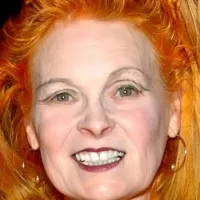Godzilla is a fictional monster (kaiju) originating from the 1954 film of the same name, directed by Ishirō Honda. He has become a global pop culture icon, featured in 33 Japanese films by Toho Co., Ltd., five American films, and various other media like video games, novels, comics, and TV series. Known as the King of the Monsters, Godzilla's impact on entertainment is undeniable.
1954: Male Pronouns Settled On
For the English translations for the Godzilla and Godzilla Raids Again novellas in 1954, writer Jeffrey Angles settled on male pronouns for Godzilla, stating that "Kayama [writer of the original novellas] thought about Godzilla as a stand-in for the nuclear bomb, and it was men in America who were developing the hydrogen bombs that frightened Japan so much in 1954.
1954: Suit Difficulties
Haruo Nakajima, who portrayed Godzilla from 1954 to 1972, said the materials used to make the 1954 suit (rubber, plastic, cotton, and latex) were hard to find after World War II.
1954: Godzilla Debuts
In 1954, Godzilla debuted in the eponymous film directed by Ishirō Honda. The film marked the first appearance of the fictional monster.
1954: First Appearance
In 1954, Godzilla first appeared in a film produced and distributed by Toho Co., Ltd. This marked the beginning of Godzilla's presence in 38 films, including both Japanese and American productions.
1954: Gender Neutral Pronouns in Original Films
In 1954, the original Japanese Godzilla films used gender-neutral pronouns for Godzilla. However, in English dubbed versions, Godzilla is explicitly described as male.
1955: Name Change to Gigantis
In 1955, during the development of the American version of Godzilla Raids Again, Godzilla's name was changed to "Gigantis" by producer Paul Schreibman, aiming to create a distinct character.
1955: Roar Substituted in Gigantis the Fire Monster
In 1955, the American version of Godzilla Raids Again, titled Gigantis the Fire Monster (1959), mostly substituted Godzilla's roar with that of the monster Anguirus.
1956: Godzilla, King of the Monsters Inspires Spielberg
In 1956, Steven Spielberg cited Godzilla, King of the Monsters! as an inspiration for Jurassic Park, which he grew up watching, describing Godzilla as "the most masterful of all the dinosaur movies because it made you believe it was really happening."
1956: Godzilla, King of the Monsters! Localization
In 1956, the American localization of the 1954 film, titled Godzilla, King of the Monsters!, was released. This film marked the first use of the epithet "King of the Monsters" for Godzilla.
1956: Godzilla's Height
In the 1956 American version, Godzilla is estimated to be 121.9 m (400 ft) tall, because producer Joseph E. Levine felt that 50 m did not sound "powerful enough".
1959: Gigantis the Fire Monster Release
In 1959, the American version of Godzilla Raids Again was released, titled Gigantis the Fire Monster, in which Godzilla's roar was mostly substituted with that of the monster Anguirus.
1962: Suit Design Changes
From 1962 to 1975, the most notable changes were the reduction in Godzilla's number of toes and the removal of the character's external ears and prominent fangs.
1962: Godzilla's Radioactive Origin
In 1962, Godzilla's accidental radioactive origin story predates Spider-Man's debut and he is considered "the original radioactive superhero".
1964: Godzilla becomes an Anti-Hero
In 1964, the movie Ghidorah marked a turning point in Godzilla's character, changing from a villain to a hero by pitting him against King Ghidorah, a greater threat to humanity. Since 1964, Godzilla has been viewed as an anti-hero.
1967: Release of Yongary, Monster from the Deep
In 1967, the Keukdong Entertainment Company of South Korea, with assistance from Toei Company, produced "Yongary, Monster from the Deep", a film featuring a reptilian monster who invades South Korea to consume oil. The film and character have been considered an imitation of Godzilla.
1972: Nakajima's Tenure Ends
Haruo Nakajima, who portrayed Godzilla from 1954, ended his tenure in 1972. He stated that the materials used to make the 1954 suit were hard to find after World War II.
1975: Suit Design Changes (Continued)
From 1962 to 1975, the most notable changes to the Godzilla suit design included the reduction in Godzilla's number of toes and the removal of the character's external ears and prominent fangs.
1975: Godzilla influences Jaws
In 1975, Godzilla also influenced the Spielberg film Jaws.
1984: Deeper Roar
From The Return of Godzilla in 1984 to Godzilla vs. King Ghidorah in 1991, Godzilla's roar was given a deeper and more threatening sound.
1984: Cybot Godzilla
In The Return of Godzilla (1984), some scenes made use of a 16-foot high robotic Godzilla (dubbed the "Cybot Godzilla") for use in close-up shots of the creature's head. The Cybot Godzilla consisted of a hydraulically powered mechanical endoskeleton covered in urethane skin.
1984: Heavier and Hotter Suits
Kenpachiro Satsuma, who portrayed Godzilla from 1984 to 1995, described how the Godzilla suits he wore were even heavier and hotter than their predecessors because of the incorporation of animatronics.
1984: Reincorporation of Design Features
The Godzilla designs from The Return of Godzilla (1984) onward reincorporated features such as external ears and prominent fangs that had been removed from 1962 to 1975.
1989: Consistent Godzilla Design
The most consistent Godzilla design was maintained from Godzilla vs. Biollante in 1989 to Godzilla vs. Destoroyah in 1995, featuring a cat-like face and double rows of teeth.
1991: Deeper Roar (Continued)
Godzilla's deeper, more threatening roar that began in 1984, with The Return of Godzilla, continued until Godzilla vs. King Ghidorah in 1991.
1991: Godzilla's Size
In the film Godzilla vs. King Ghidorah in 1991, Godzilla destroyed the 243-metre-tall (797 ft) Tokyo Metropolitan Government Building.
1992: Reversion of Roar
In 1992, starting with Godzilla vs. Mothra, the deeper and more threatening-sounding roar introduced in The Return of Godzilla (1984) was reverted to the previous sound.
1993: Godzilla inspires Jurassic Park
In 1993, Steven Spielberg cited Godzilla as an inspiration for Jurassic Park.
1994: Air Duct Added to Suit
In 1994, the suit used in that year's Godzilla vs. SpaceGodzilla was the first to include an air duct, which allowed suit actors to last longer during performances.
1995: Satsuma's Tenure Ends
Kenpachiro Satsuma portrayed Godzilla from 1984 until 1995. During his tenure, the Godzilla suits he wore were heavier and hotter than their predecessors because of the incorporation of animatronics.
1995: Cat-like Face and Double Rows of Teeth
The suit for Godzilla from Godzilla vs. Biollante (1989) to Godzilla vs. Destoroyah (1995) was given a cat-like face and double rows of teeth.
1996: Godzilla Receives MTV Lifetime Achievement Award
In 1996, Godzilla received the MTV Lifetime Achievement Award.
1997: Discovery of Gojirasaurus
In 1997, a carnivorous dinosaur from the Triassic period was named Gojirasaurus.
1998: Animatronic Godzilla
For Godzilla (1998), the film's special effects crew built a 1⁄6 scale animatronic Godzilla for close-up scenes, whose size outmatched that of Stan Winston's "Rexy" in Jurassic Park.
1998: Kimi Honda Dismisses Name Origin Story
In 1998, Kimi Honda, the widow of director Ishirō Honda, dismissed the widely accepted story about the origin of Godzilla's name in a BBC documentary. She believed that Honda, Tanaka, and Tsuburaya gave "considerable thought" to the name of the monster.
1998: Redesign as a Fast Runner
In Godzilla (1998), special effects artist Patrick Tatopoulos was instructed to redesign Godzilla as an incredibly fast runner and reimagined the creature as a lean, digitigrade bipedal, iguana-like creature rendered via CGI.
1998: Godzilla Depicted Laying Eggs
In the 1998 film Godzilla, the monster is referred to as a male and is depicted laying eggs through parthenogenesis.
1999: Naming of Asteroid 101781 Gojira
In 1999, the main-belt asteroid 101781 Gojira, discovered by American astronomer Roy Tucker, was named in honor of the creature.
2000: Charcoal Gray Costume
Up until the film Godzilla 2000: Millennium in 2000, the costumes used in the movies were usually painted charcoal gray with bone-white dorsal plates.
2004: Godzilla's Star on the Hollywood Walk of Fame
In 2004, Godzilla was given a star on the Hollywood Walk of Fame to celebrate the premiere of the character's 50th anniversary film, Godzilla: Final Wars.
2007: Japanese Defense Minister on Godzilla Appearance
In 2007, Japanese defense minister Shigeru Ishiba said that he would mobilize the Japan Self-Defense Forces in response to an appearance by Godzilla.
April 2008: Toho Lawsuit Against Subway
In April 2008, Toho filed a lawsuit against Subway for using a giant monster resembling Godzilla in a commercial for their Five Dollar Footlongs sandwich promotion without permission, demanding $150,000 in compensation.
February 2011: Toho Sues Honda
In February 2011, Toho sued Honda for depicting a fire-breathing monster in a commercial for the Honda Odyssey. The monster was seen briefly on a video screen inside the minivan.
May 2011: MV Gojira Renamed MV Brigitte Bardot
In May 2011, the Sea Shepherd Conservation Society renamed their vessel, the MV Gojira, to the MV Brigitte Bardot due to legal pressure from Toho. The vessel targeted Japanese whalers in defense of whales in the Southern Ocean Whale Sanctuary.
2014: Sound Editors Refuse to Disclose Roar Source
For the 2014 American film, sound editors Ethan Van der Ryn and Erik Aadahl refused to disclose the source of the sounds used for Godzilla's roar. Aadahl described the two syllables of the roar as representing two different emotional reactions.
2014: Godzilla Snickers Commercial
In 2014, Godzilla appeared in a commercial for Snickers candy bars, serving as an indirect promotion for the 2014 Godzilla film.
2014: Character Portrayed via CGI
In Godzilla (2014), the character was portrayed entirely via CGI. The special effects team strove to make the monster "more dynamic than a guy in a big rubber suit."
2014: Godzilla's Size
In the American film Godzilla (2014) from Legendary Pictures, Godzilla was scaled to be 108.2 m (355 ft) and weighing 90,000 short tons (81,650 metric tons), making it the largest film version at that time.
April 2015: Godzilla Named Special Resident of Shinjuku
In April 2015, the Shinjuku ward of Tokyo named Godzilla a special resident and official tourism ambassador to encourage tourism. During an unveiling of a giant Godzilla bust at Toho headquarters, Shinjuku mayor Kenichi Yoshizumi stated, "Godzilla is a character that is the pride of Japan."
May 2015: Toho Sues Voltage Pictures
In May 2015, Toho launched a lawsuit against Voltage Pictures over a planned picture starring Anne Hathaway. Promotional material released at the Cannes Film Festival used images of Godzilla.
2016: Godzilla's Size
For Shin Godzilla (2016), Godzilla was made even taller than the Legendary version, at 118.5 m (389 ft).
2017: Godzilla's Size
In Godzilla: Planet of the Monsters in 2017, Godzilla's height was increased further still to 300 m (984 ft).
July 11, 2018: Official Naming Citation for Asteroid Gojira
On July 11, 2018, the official naming citation for the asteroid Gojira was published by the Minor Planet Center.
2019: Godzilla's Size
In Godzilla: King of the Monsters (2019) and Godzilla vs. Kong (2021), Godzilla's height was increased to 119.8 m (393 ft) from the 2014 incarnation.
2021: Godzilla's Size
In Godzilla vs. Kong (2021), Godzilla's height was increased to 119.8 m (393 ft) from the 2014 incarnation.
2024: Godzilla Minus One Nominated for Oscar and Wins
In 2024, Godzilla Minus One was nominated for the Academy Award for Best Visual Effects, marking the first Godzilla film to receive an Oscar nomination. At the 96th Academy Awards ceremony in 2024, it won the award.
Mentioned in this timeline

Steven Spielberg is a highly influential American filmmaker recognized as...
World War II - was a global conflict between the...
Japan is an East Asian island country situated in the...
Korea is a peninsular region in East Asia comprised of...

Anne Hathaway is a highly successful American actress renowned for...
South Korea officially the Republic of Korea occupies the southern...
Trending
7 months ago World's Oldest Person, Inah Canabarro Lucas, Dies in Brazil at 116
3 months ago American hiker Cole Henderson found dead in Spanish Pyrenees after going missing.
Tristan Gray is an American professional baseball infielder currently playing for the Tampa Bay Rays in Major League Baseball MLB...

4 months ago Phillies Shutout Tigers, Schwarber Featured as Philadelphia Returns to First Place
Spain and Turkey maintain active diplomatic relations with embassies in each other's capitals Madrid and Ankara and consulates general in...

1 hour ago Justin Tucker's NFL Suspension Ends; Potential Teams Include Packers, Rams, and Falcons.
Popular

XXXTentacion born Jahseh Dwayne Ricardo Onfroy was a controversial yet...

Cristiano Ronaldo often nicknamed CR is a Portuguese professional footballer...

Candace Owens is an American conservative political commentator and author...

Chuck Schumer is the senior United States Senator from New...

Bernie Sanders is a prominent American politician currently serving as...

Vivienne Westwood was a highly influential English fashion designer and...